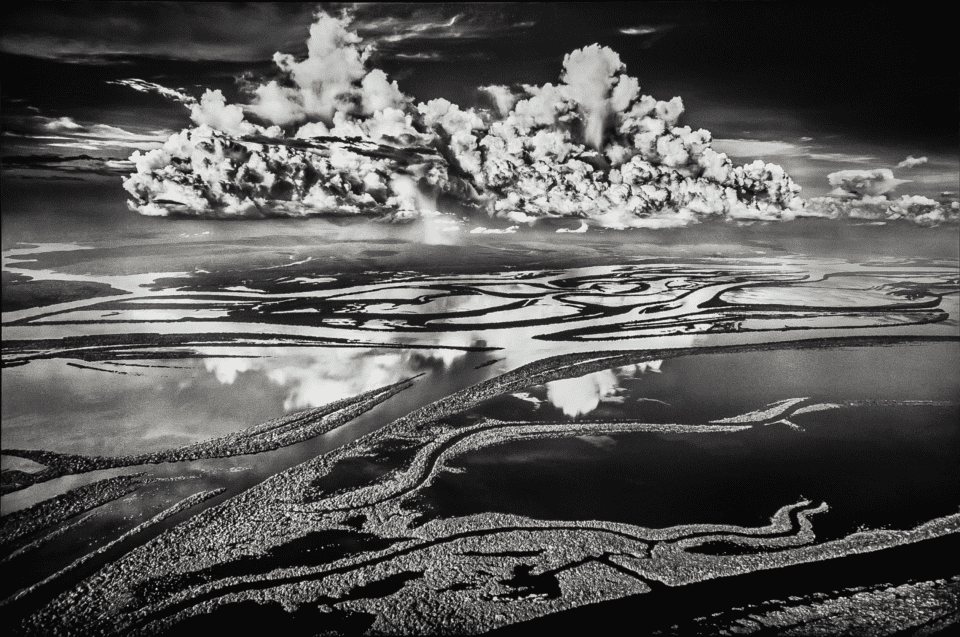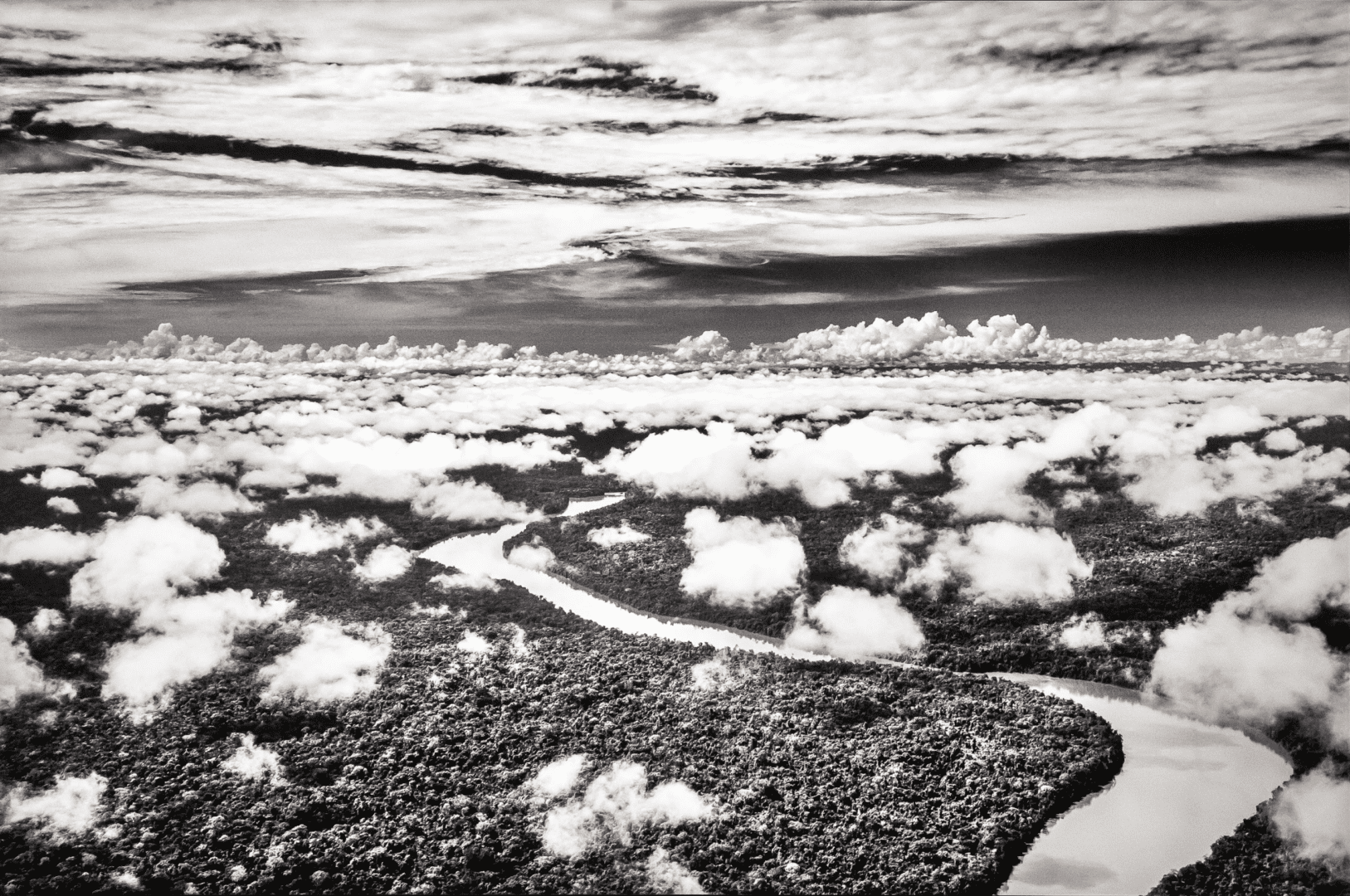Sebastião Salgado is a documentary photographer renowned for shining a light on the lives of workers around the world. The artist has traveled to over 120 countries for various projects, which range from Brazilian goldmines to oil fields in Kuwait. The straightforward images often portray individuals living in difficult economic or political circumstances and Salgado, as a UNICEF Goodwill Ambassador, uses his platform as a means of driving social change. A new exhibition at National Museum of Singapore presents his work on the Amazon rainforest. The captivating black-and-white pictures showcase both the outstanding beauty of the location and the ever-growing threat it faces from climate change. The series is a compassionate archive of Indigenous life and traditions, as well as a call to action. We spoke to Assistant Curator Samuel Lee about how the immersive exhibition was created, and the ways in which the gallery is encouraging visitors to be more environmentally conscious.

A: What inspired Sebastião Salgado to focus on the Amazon for this extensive photographic project, and how does this align with a broader artistic and environmental vision?
SL: Salgado considers the camera and the medium of photography as central to his worldview. His long-term photographic projects reveal the interconnectedness of environmental and humanitarian issues that have wide-scale planetary consequences. For Salgado, the act of image-making allows him to appeal to viewers on an intuitive and emotional level to take meaningful action for environmental justice. Amazônia represents a culmination of his decades-long engagement with the region, and it features over 200 evocative black-and-white photographs that portray the lives of the Indigenous communities and the majestic landscapes and untouched beauty of the region. This exhibition arrives at a critical time when climate action is more urgent than ever. It is far more than just a photography exhibition – it’s a powerful call to action for environmental conservation. The National Museum of Singapore is proud to be able to showcase this exhibition to audiences in Singapore and highlight this vulnerable heritage before it becomes, in Salgado’s words, “a testimony of a lost world 50 years from now.”

A: How did you and the team decide which images and themes to highlight in this exhibition? Were there particular challenges in narrowing down the selection from such a vast archive?
SL: The exhibition is structured around two key themes: natural landscapes of the Amazon, and the Indigenous communities of the region. In the first theme, special characteristics of the biome, such as its unique hydrological formations, are covered in the sections “Flying Rivers” and “Tropical Storms,” demonstrating the Amazon’s unique atmospheric phenomena; other sections such as “The Forest” and “Anavilhanas” spotlight the subtropical jungles and vast freshwater archipelagos supporting the Amazon’s unsurpassed biodiversity. The second key theme highlights 12 of the over 200 documented Indigenous Peoples of the Amazon. It comprises portraits of individuals from these communities while featuring their perspectives and voices in the form of video-interview installations. By presenting specific voices and perspectives, the exhibition moves beyond typical representations and reveals the region’s intricate ecosystems. The challenge was not just selecting images, but creating an immersive experience that would help visitors truly understand the Amazon’s ecological and cultural significance. To do so, French composer Jean-Michel Jarre worked with the Salgados to create a soundscape that envelopes the space, featuring natural sounds of the forest, animal calls, and Indigenous songs he drew on from the sound archives of the Ethnography Museum of Geneva. The sense of being surrounded by the rainforest continues into projection rooms. These projection rooms allow Amazônia, as a full body of work, to be presented, since this series contains more than 400 photographs in total. The exhibition also includes a space spotlighting the work of Instituto Terra, the reforestation non-governmental organisation founded by the Salgados. All these components aid to immerse visitors into the world of the Amazon as captured by Salgado’s lens.

A: How were the Indigenous communities of the Amazon involved in the creation of this project? Did their perspectives influence the way the exhibition was curated?
SL: The design of the exhibition, conceived by Lélia Salgado, features three traditional Indigenous home structures called ocas to house portraits of these communities, paying tribute to their way of life. It was important to portray the perspectives of the Indigenous populations and their lived experiences as accurately as possible. After the laborious process of researching, gaining the trust and establishing relationships with the Indigenous communities, which was carried out over a decade of close engagement (and almost 80 visits), Salgado featured over 100 captivating portraits of the 12 different Amazonian communities. Their voices, which are spatially and symbolically centred in each oca-structure as video installations, come out strongly as calls to protect the rainforest and the communities of the Amazon.
A: The exhibition is described as a “call for greater conservation efforts.” How do you hope this message will resonate with audiences, particularly in urban settings like Singapore?
SL: Singapore is geographically distant from the Amazon region, but its fate is intertwined with our own. The Amazon is deeply connected to the world’s climate and affects all of us. Both regions grapple with the balance between development and preservation and demonstrate the importance of biodiversity in maintaining healthy ecosystems. Climate change is a global issue and what happens in the Amazon affects us here in Singapore too. The exhibition also shows the deep interconnection between the natural world and human communities. By showcasing both the breathtaking landscapes and the lives of Indigenous peoples who have lived harmoniously with the forest for generations, Amazônia reminds us of the delicate balance between human civilization and nature. Similarly, our hope is that Amazônia will inspire lasting change in how our visitors interact with their environment and doing what it takes to preserve and live harmoniously with it.

A: How does Amazônia build on, or differ from, Salgado’s previous exhibitions, such as Genesis?
SL: Salgado’s return to the National Museum of Singapore builds upon his first showing of Genesis in 2014, which deeply resonated with visitors through its portrayal of the natural world untouched by human intervention. Genesis was a broader exploration of habitats from far-flung regions of the planet and Amazônia is a deep, focused dive into a single, critical ecosystem. This exhibition is grander, more intimate and urgent, and is a potential historical record of what might be lost if we do not take immediate conservation action. Salgado’s recent work has only grown deeper in its exploration of the environment – and its call to action ever more urgent. Amazônia offers a unique opportunity for the museum to initiate important conversations among our visitors on environmental conservation through Salgado’s unique lens.
A: With the Amazon often portrayed in the media as a site of ecological crisis, how does this exhibition balance highlighting the beauty of the region with addressing the urgent threats it faces?
SL: Salgado portrays the Amazon as a lush, Edenic paradise because he intends for his viewers to see the rainforest as something that is very much alive and breathing. This is contrast to views of the Amazon that only point out the injury and damage wrought over the past century, through logging, deforestation, illegal mining and so on. The interviews with leaders such as Beto Marubo (Marubo leader, Kumãia community, Javari Valley Indigenous Territory) and Afukaká Kuikuro (Kuikuro chef, Ipatse Village, Xingu Indigenous Territory) instead reveal the extent of the ongoing ecological and societal catastrophes faced by the region, expressed in their own words. These are stories that reverberate throughout the exhibition hall alongside our experience of looking closely at each image, summoning an experience of beauty that is also a meditation on fragility and loss.

A: Beyond the exhibition, what steps or initiatives are being taken to ensure that the message of conservation reaches a global audience and results in tangible environmental action?
SL: The exhibition’s partnership with Zurich Insurance is a prime example. Through the Zurich Forest project, launched in collaboration with the Salgados, one million trees in the Brazil Atlantic Forest have already been planted. The project also supports land restoration efforts by Instituto Terra. Singapore is the first Asian stop for this global travelling show which helps to ensure that its message reaches diverse audiences all over the world, building a movement towards protecting the natural world and its communities. At the National Museum of Singapore, climate change and sustainability are pressing global concerns that we have presented and discussed in various exhibitions and programmes, such as the Asian debut of Plastic: Remaking Our World early this year, which sheds light on how we can use the material in new and more conscious ways. Amazônia continues the museum’s commitment to educate and inspire visitors on contemporary issues and for this exhibition, to learn, appreciate and conserve the majesty of the Amazon rainforest. It is important for us as a museum to create opportunities and foster partnerships that encourage these important dialogues among our visitors.
A: As a curator, what impact has working on this project had on you personally? Did it change the way you perceive the relationship between art, conservation and cultural storytelling?
SL: I was reminded of the agency of images: how they work on us, and why they continue to be important in spite of a world already saturated with images. They have the power to appeal to us on an emotional, intuitive and supra-rational level, and compel us to locate a shared sense of compassion, empathy, and sense of justice. If Salgado’s previous work as a photojournalist at the frontiers of war, exploitative industrialisation and environmental devastation, confronted me with images of a humanity debased and compromised, then Amazônia offers hope and the promise of a new global consensus to protect what is so essential (yet fragile) to our species.
Amazônia is at National Museum of Singapore until 2 March: nhb.gov.sg
Words: Emma Jacob and Samuel Lee
Image Credits:
FLYING RIVERS. © Sebastião Salgado.
ANAVILHANAS. © Sebastião Salgado.
SURUWAHÁ © Sebastião Salgado.
MOUNTAINS. © Sebastião Salgado.
THE FORESTS. © Sebastião Salgado.
FLYING RIVERS. © Sebastião Salgado.





